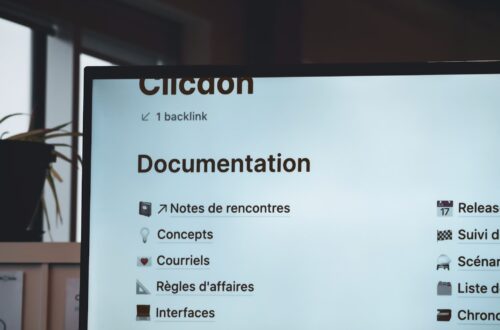Most voice AI testing strategies fail not because of poor intent accuracy, but because teams test too narrowly.
They validate speech recognition and language models — yet forget the orchestration layers, API dependencies, and the real-world chaos of customer speech.
In reality, testing voice AI systems is more like tuning an orchestra than checking a circuit. You’re not just validating code; you’re validating conversation.
And in 2025, with advanced conversational AI validation methods evolving rapidly, the companies that treat QA as a continuous discipline — not a pre-launch checklist — are the ones winning customer trust and retention.
The Evolution of Voice AI Testing
Early testing frameworks were built for traditional IVR systems: structured inputs, predictable flows, and rigid decision trees. Those days are gone.
Modern voice AI validation methods must account for variability across:
- Natural accents, background noise, and multi-speaker environments.
- Model drift from ongoing retraining cycles.
- Real-time integrations (e.g., CRMs, analytics, or live agent handoffs).
In short, every voice AI testing strategy must validate not just linguistic accuracy, but system resilience.
Consider this: a 97% ASR (Automatic Speech Recognition) accuracy rate sounds great — until you realize your fallback intent misroutes 20% of those cases due to flawed dialogue logic.
The takeaway? Testing voice AI is not linear; it’s holistic.
1. Unit Testing for Voice Components
At the lowest level, we start with unit testing for voice systems — validating each component independently.
Think of it as testing the building blocks:
- ASR models (word error rate, phoneme recognition)
- NLU (intent detection, entity extraction)
- TTS (voice naturalness, latency)
Why it matters: Unit tests catch regressions early when a new model or dependency is introduced.
Key Metrics:
- Word Error Rate (WER) < 8% for common domains
- Intent Accuracy > 90%
- TTS Latency < 300ms
Technically speaking, achieving these numbers requires structured datasets — diversified by dialect, gender, and emotion tone — and maintaining them as versioned assets within your QA repository.
2. Integration Testing: The Hidden Complexity
This is where most failures hide.
Integration testing ensures that when ASR, NLU, and backend APIs talk to each other, they don’t trip over timing or data formatting issues.
Common pitfalls:
- Webhook delays causing unnatural pauses.
- CRM API returning unexpected fields.
- Missed context resets during multi-turn conversations.
By designing integration validation frameworks, teams simulate real-world calls — capturing latency at every hop in the pipeline.
“When we started logging at each interaction boundary — ASR output, NLU processing, CRM sync — we reduced misroutes by 42%.”
— Rajeev Dhanani, QA Director, FinTech Voice Platform
3. Conversational QA: The Human Factor
Now comes the most nuanced layer — QA for voice agents in live interactions.
Unlike text chatbots, voice systems must manage tempo, tone, and interruptions. A millisecond delay can make an agent sound robotic or rude.
The best conversation testing protocols involve:
- Simulated user dialogues with interruption and error handling scenarios.
- Speech overlap testing (human and bot speaking simultaneously).
- Persona tone validation using emotional consistency scoring.
Modern testing frameworks even apply affective scoring — rating how human-like or empathetic a response feels.
For enterprises deploying across languages, multi-language conversation testing ensures your voice AI system feels equally natural in Spanish, Hindi, or Arabic — not just English.
4. Regression Testing: Protecting Stability
Every time your data scientists retrain a model or update an intent, regression risks multiply.
Without regression tests, “improvements” in one area can break production elsewhere.
A robust voice AI QA process includes automated regression suites that re-run full intent libraries whenever:
- A model checkpoint is replaced.
- A new intent or slot is added.
- Backend logic is modified.
Smart teams use continuous integration pipelines (CI/CD) to trigger these automatically.
In practice, regression testing prevents downtime and ensures consistent customer experience — especially critical in sectors like banking, healthcare, and telecom.
5. Validation Frameworks: Defining the Gold Standard
To unify all these layers, mature teams build a voice AI validation framework — a central structure defining testing types, tools, and performance thresholds.
Here’s what that framework typically covers:
- Speech Validation: Accuracy and latency thresholds
- Functional Testing: Flow coverage and path validation
- Performance Testing: Load handling under concurrent calls
- Security Testing: Data encryption, authentication, and session expiry
- User Experience Testing: Persona alignment and emotional tone
This isn’t theoretical. Enterprises that institutionalize validation frameworks report up to 50% reduction in post-deployment defects and 30% faster iteration cycles.
The Role of Synthetic Data in Testing
One of the biggest breakthroughs in 2025 is synthetic data generation for voice AI testing strategies.
Synthetic speech datasets allow teams to simulate rare accents, emotional states, or noise conditions — without relying solely on costly, manual recordings.
These synthetic scenarios ensure better test coverage and uncover edge cases that real-world sampling misses.
Still, the tradeoff remains: synthetic voices can lack subtle emotional variance, so they complement — not replace — real-world QA data.
6. User Acceptance Testing (UAT): The Reality Check
At the final layer, testing shifts from technical performance to perceived quality.
UAT validates whether users experience natural flow, quick responses, and emotional resonance.
Typical validation parameters include:
- Conversation length (shorter = smoother)
- Drop-off rates
- Sentiment trajectory
- Self-service completion rate
Many teams leverage voice AI analytics platforms to measure these post-launch, tracking how real users behave versus internal testers.
If performance drops after deployment, the issue often lies not in the models but in context design.
7. Continuous QA in Production
In enterprise environments, testing doesn’t end at deployment — it evolves.
Modern voice AI QA processes now include in-production monitoring through anomaly detection systems that:
- Flag unusual silence durations
- Detect rising fallback rates
- Trigger auto-alerts when model confidence dips below threshold
This proactive QA ensures performance remains consistent even under shifting traffic patterns or new accents.
In effect, quality assurance becomes continuous, not episodic.
Governance and Reporting
The best QA teams tie results directly to business KPIs.
For example, customer satisfaction scores (CSAT) can be mapped to TTS naturalness metrics, while call resolution time can correlate with NLU accuracy improvements.
Governance dashboards consolidate these metrics — transforming QA data into business intelligence.
When aligned with platforms like TringTring.ai, QA leaders can benchmark against industry standards and adapt best practices globally.
Testing Tools and Emerging Standards
In 2025, several new tools have matured for scalable testing of voice AI systems:
- Botium and Speechly TestBench for end-to-end automation.
- Deepgram QA Suite for phoneme-level ASR analysis.
- AudEERING and Hume AI for emotional validation.
However, no single tool covers it all — success depends on building a modular QA stack suited to your voice platform’s architecture and deployment environment.
The Bottom Line
Quality assurance isn’t glamorous, but it’s what separates reliable platforms from experimental ones.
Testing isn’t about perfection — it’s about predictability.
Teams that embed testing as a cultural habit, not a final phase, build systems that scale confidently.
And with modern voice AI validation frameworks and structured testing strategies, enterprises can finally guarantee what customers have wanted from the beginning — consistent, natural, intelligent conversations.






